So your requirements are "lots of colors" and "no two colors should map to the same grayscale value when printed", right? The second criteria should be met by any "sequential" colormaps (which increase or decrease monotically in luminance). I think out of all the choices in matplotlib, you are left with cubehelix (already mentioned), gnuplot, and gnuplot2:

The white line is the luminance of each color, so you can see that each color will map to a different grayscale value when printed. The black line is hue, showing they cycle through a variety of colors.
Note that cubehelix is actually a function (from matplotlib._cm import cubehelix), and you can adjust the parameters of the helix to produce more widely-varying colors, as shown here. In other words, cubehelix is not a colormap, it's a family of colormaps. Here are 2 variations:


For less wildly-varying colors (more pleasant for many things, but maybe not for your bar graphs), maybe try the ColorBrewer 3-color maps, YlOrRd, PuBuGn, YlGnBu:

https://www.flickr.com/photos/omegatron/7298887952/
I wouldn't recommend using only this color to identify bar graphs, though. You should always use text labels as the primary identifier. Also note that some of these produce white bars that completely blend in with the background, since they are intended for heatmaps, not chart colors:
from matplotlib import pyplot as plt
import pandas, numpy as np # I find np.random.randint to be better
# Make the data
x = [{i:np.random.randint(1,5)} for i in range(10)]
df = pandas.DataFrame(x)
# Make a list by cycling through the colors you care about
# to match the length of your data.
cmap = plt.get_cmap('cubehelix')
indices = np.linspace(0, cmap.N, len(x))
my_colors = [cmap(int(i)) for i in indices]
# Specify this list of colors as the `color` option to `plot`.
df.plot(kind='bar', stacked=True, color=my_colors)
And these are the new guys:










